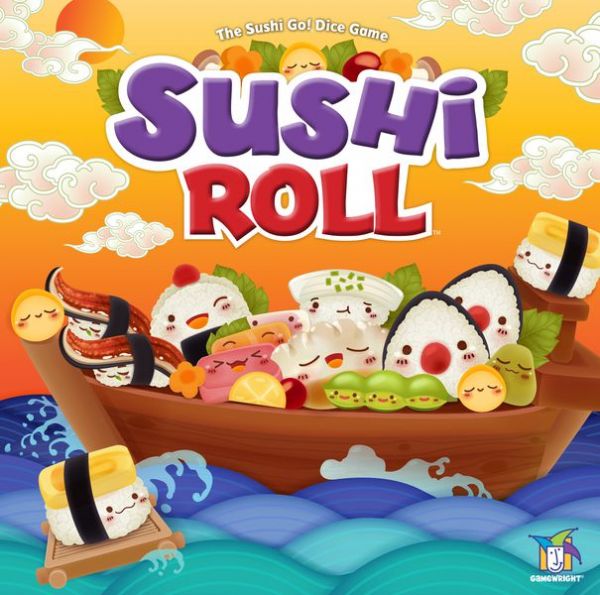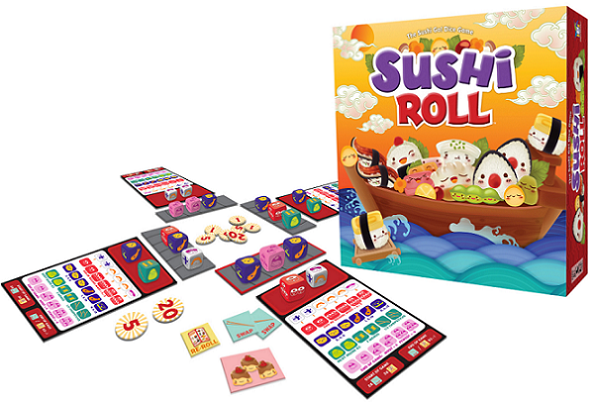Sushi Roll: A Dice Drafting Twist on a Gamewright Classic

Draft dice and create a yummy menu of sushi, as you compete for points and a tasty dinner.
Inspired by Sushi Go, Sushi Roll replaces cards with dice, but is this change enough to warrant a brand new game? Roll the dice and find out.
Gameplay
Each player takes a player board, a conveyer belt tile, two chopsticks, and three menu tokens. At the beginning of each round players draw a certain number of dice from the dice bag (the number varies based on player count). You roll the dice and place them on your conveyer belt. Players then take turns selecting one die from their conveyer belts and placing it on their player boards, keeping the result that it rolled. On your turn you may use a menu token to reroll any of your dice that you wish or a chopstick token to exchange a die on your conveyer belt with another player’s.
After each player has drafted one die, everyone slides their conveyor belt tile over to the player on their left, reroll all the new dice in front of them, and again take turns selecting one die. This continues until there are no dice left on the conveyor belts.
There are five different types of dice, each of which scores differently. The pink die awards you one to three pudding tokens. The player with the most pudding at the end of the game scores points, while the player with the fewest loses points. The green die can give you more chopstick or menu tokens, or give you wasabi. The white die gives you food items worth one to three points at the end of the round, but if you have a wasabi on your player board when you draft the white die, you can place it on top of the wasabi and it will now be worth three times as many points. The red die gives you one to three maki rolls, with the players with the most and second most maki rolls at the end of the round scoring points. Finally, the blue die rolls appetizers, which score points based on how many you have in a set.
Whoever has the most points at the end of three rounds wins the game.

Review
Sushi Roll has a lot in common with its predecessor, Sushi Go, but does also bring some new ideas to the table. Changing the cards to dice means adding another element of uncertainty. You can see what every player has, but you don’t know what the dice results will be on your turn. It also means you don’t know exactly what it is you’ll be passing to your opponents.
The components are high quality, and the artwork on the dice is quite cute. The player boards are useful both for holding your selected dice and providing scoring information, while the conveyor belt tiles are fantastic theming for a drafting game. The game box is larger than it needs to be, however, given the size of the components included.
Because players take turns drafting, the gameplay isn’t quite as fast or simultaneous as it was in Sushi Go, particularly in the higher player counts. It’s still a fast game, however, and the ability to take dice from an opponent’s conveyer belt adds an additional amount of player interaction.
If you have limited space in your game collection and already own Sushi Go, you may find Sushi Roll is simply too similar, particularly in its scoring, and it certainly takes up more space. However, the game’s addition of dice is solid, introducing a curious and satisfying mixture of unpredictability along with more information available each turn. Gamewright has a high standard for their games, and Sushi Roll definitely lives up to it.
Pros: The dice introduce more uncertainty while also giving players more information, excellent component quality
Cons: Very similar to Sushi Go, could be packaged in a smaller box
Disclosure: we received a complimentary review copy of this game.







